– Light Levels in Aquariums
Content Table
Whether you are a beginner or an experienced aquarist, understanding light levels in aquariums is crucial. Appropriate light levels help to create healthy and attractive aquarium conditions. Generally, light levels in aquariums include low, medium, and high intensities. These different levels of illumination have distinct effects on the growth, behavior, and overall health of the aquarium inhabitants. For example, supporting photosynthesis in plants and enhancing the colors of fish and corals. In this article, we will delve into the fascinating world of light levels in aquariums.
Do LED lights get hot
Compared with traditional lights, like incandescent or fluorescent lights, LED lights commonly produce significantly lower heat. The heat is typically dissipated through the heat sink or other cooling mechanisms built into the light fixture. In most cases, the heat produced by LED lights is not significant enough to have a noticeable impact on the water temperature in an aquarium.
However, in certain cases where LED lights are used in a small, enclosed space with poor ventilation, or if multiple LED lights are concentrated in a small area, there could be a slight increase in water temperature. This is more likely to happen in smaller aquariums or aquarium setups with limited air circulation.
To prevent any potential heat buildup, it is advisable to ensure proper ventilation and maintain a suitable distance between the LED lights and the water surface. Additionally, to ensure the water temp is within the appropriate range, you’d better monitor the aquarium temperature regularly with a thermometer.
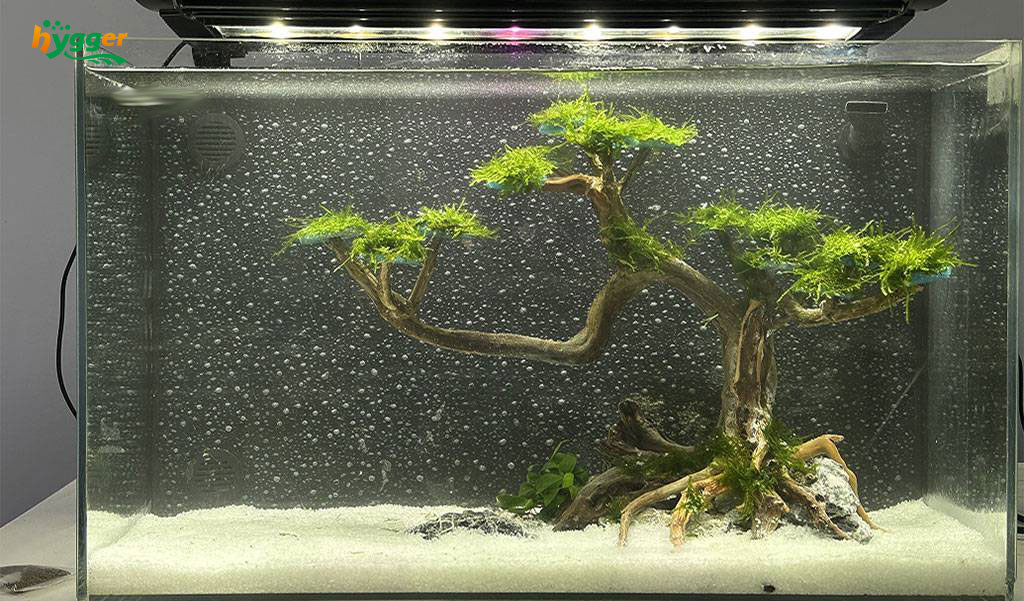
What is low vs. medium vs. high light
The effective value and range of low, medium, and high light
| Light levels | Effective value | Range |
| Low Light | 10–50 lumens per gallon (lm/gal) or 2.6-13 lumens per liter (lm/L) | 10–100 lumens per gallon (lm/gal) or 2.6-26 lumens per liter (lm/L) |
| Medium Light | 50–100 lumens per gallon (lm/gal) or 13–26 lumens per liter (lm/L) | 50–200 lumens per gallon (lm/gal) or 13–53 lumens per liter (lm/L) |
| High Light | Approximately 100 lumens per gallon (lm/gal) or 26 lumens per liter (lm/L) and above | Approximately 200 lumens per gallon (lm/gal) or 53 lumens per liter (lm/L) and above |
How light levels are measured in LED lights?
Light levels in LED lights are typically measured using two main parameters: luminous flux and illuminance.
Luminous flux measures the total amount of visible light emitted by an LED light source. It is typically measured in lumens (lm). The higher the luminous flux value, the brighter the LED light will appear.
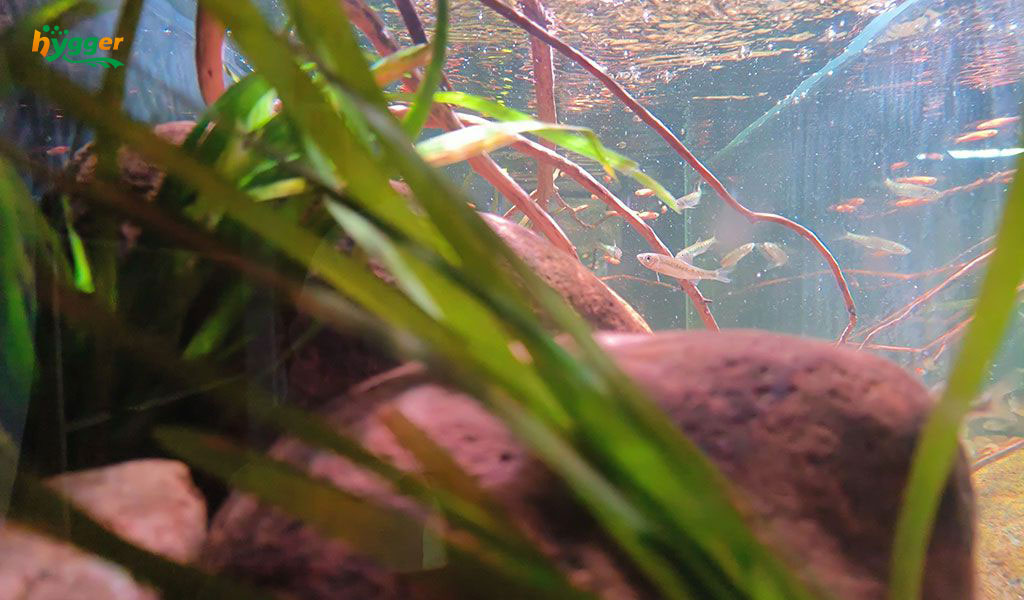
Illuminance measures the intensity of light falling on a surface. It quantifies how much light is reaching a particular area. Illuminance is typically measured in lux (LX), which represents one lumen per square meter. Lux meters, also known as light meters, are used to measure illuminance.
Features and roles of best LED light level: low, medium, and high
| Light levels | Features | Roles |
| Low light | Featuring relatively dim illumination, the light intensity is typically lower, and the color temperature may be on the warmer side, creating a subdued lighting effect. | 1. Low light is suitable for aquarium setups with low-light plants or for aquariums where a more natural, low-light environment is desired. 2. Low light helps create a calming atmosphere and is often used in aquariums with slow-growing or shade-tolerant plants. 3. Low light levels can also help reduce algae growth. |
| Medium-light | Medium-light levels provide moderate brightness and a balanced color temperature, usually in the range of 5000-7000 Kelvin. It results in a more vibrant and visually appealing display. | 1. Medium light promotes healthy plant growth, encourages more compact and bushy growth forms, and enhances the colors of both plants and fish. 2. Medium light levels are suitable for a wide range of aquarium plants, including those that require moderate to highlight levels. |
| High light | High light levels are characterized by intense illumination and a higher color temperature, typically in the range of 6500-10000 Kelvin. This produces a bright and crisp lighting effect. | 1. High light is used for aquarium setups with demanding or light-hungry plants that require high levels of photosynthetically active radiation (PAR) for optimal growth. 2. High light promotes rapid plant growth, encourages lush and compact growth forms, and enhances the colors of both plants and fish. |
What are the optimal levels of lighting for my tank?
When it comes to the optimal levels of lighting, you should consider the aquarium types (e.g. planted aquariums, reef aquariums, or fish-only aquariums), the specific needs of aquatic pets and plants, and the available aquarium lighting equipment. Generally, deeper tanks may require stronger lighting to ensure sufficient light penetration. Consider the depth and size of your tank when selecting lighting fixtures to ensure that the light can reach all areas of the tank.
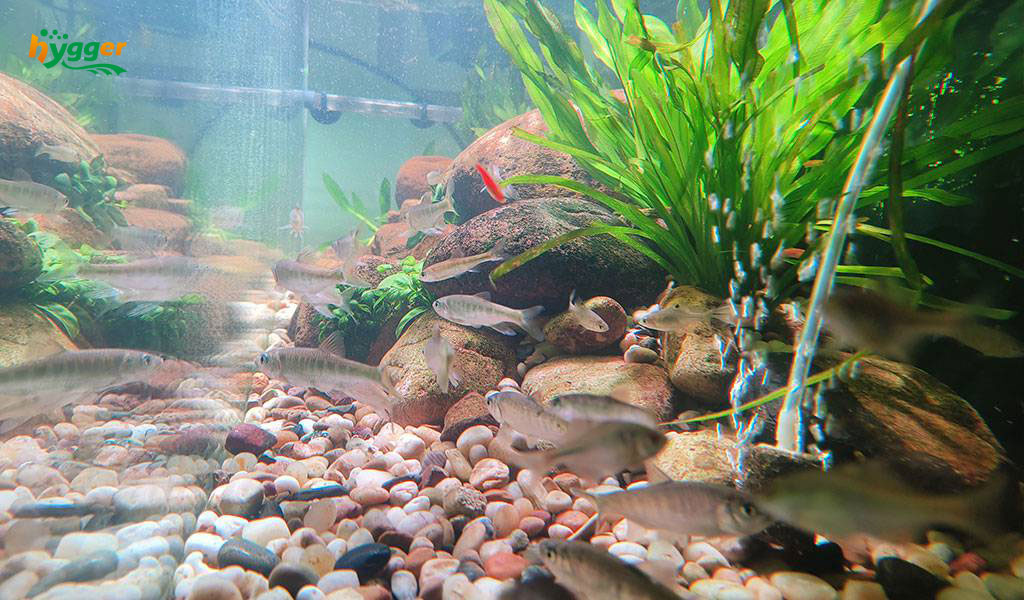
For planted tanks, the light intensity is around 15-30 PAR at the substrate level for low-light plants, 30-80 PAR for medium-light plants, and 80-150 PAR for high-light plants. Adjust the duration of light exposure (photoperiod) based on the plant’s needs, typically ranging from 8 to 12 hours per day.
If you have a 20-gallon tank keeping betta fish and java moss, 60cm in length, 30cm in width, and 40cm in height. Then 18W or 24W 978 LED light is an excellent choice. It is recommended to keep the light on for about 8–10 hours each day. And you can choose the Default Mode, which mimics sunrise and sunset.
Best LED lighting levels for aquarium plants
In this segment, we will list some lighting levels and requirements for some aquarium plants.
| Aquatic plants | Moss, Java fern, Anubias | Red flame sword, Micro sword, Pearl weed | Red or colored aquatic plants |
| Lighting levels | Low light plants | Medium-light plants | High light plants |
| Lighting hours | 8–10 hours | 10 hours | 10–12 hours |
| Light intensity | 10-20 lumens/liter | 20-40 lumens/liter | More than 40 lumens/liter |
| PAR values | 15-30 PAR (10-50 μmol/s) |
30-80 PAR (50-120 μmol/s) |
More than 80 PAR (120-200 μmol/s, or higher) |
LED lighting facts
Though LED lights are better options. Their light intensity may lower over time. This is because the light-emitting diodes (LEDs) of LED lights age with use. Also, properly using LED lights is not harmful to the eyes and skin.
Related topic about aquarium lighting
Aquarium Lighting Basics:
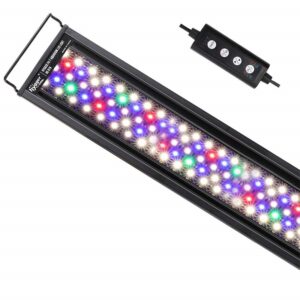
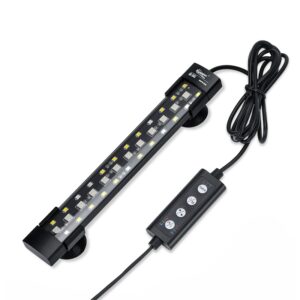
I have a clip on hygger 24/7 14w Daylight-Moonlight led light. It’s for my 3gallon nano tank. My rotala vietnam isn’t turning red except towards the top closest to the light. Is this light not “high light”? I thought 14w would help my red plants from bottom and top. What is the par for this specific light?
Hi Sero,
Sorry for the inconvenience caused to you.
hygger customer service will reach you out to solve the issue.
Please check the mailbox lately.
Thanks
hygger team
Its common for rotala to display the characteristics you described. Several factors are necessary for h’ra to be as deep/bright red as I’m assuming you’d like. Red plants become redder the more intense the light. Red coloration is the plant’s defense against strong light. Hence, red on top, probably green the further down on the stem you go. CO2 injection and nitrate limitation will also help.
I bought a 48” light bar on August 11, 2023 and after 4 1/2 months one half of the bar has faded away…now my 30 gallon long is in darkness on one half. I love this light and its features but cannot afford to replace it every 6 months…is this normal? I have it on risers and there is a glass cover on the aquarium, so it has not gotten wet OR overheated..HELP!
Hi Sharon,
Sorry for the inconvenience caused to you. hygger customer service will mail you to help solve the problem, or you can mail to service@hygger-online.com
Thanks
hygger team